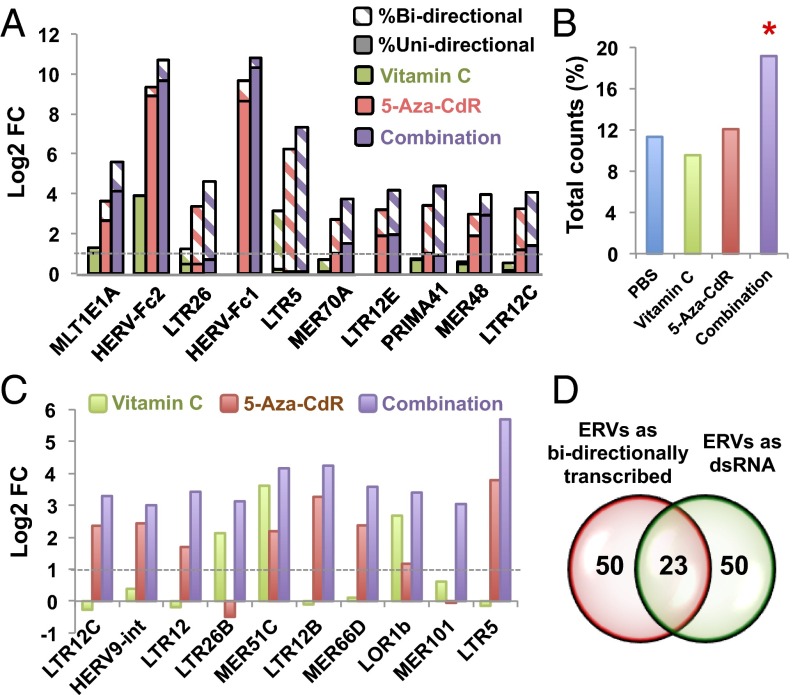Fig. 3.
Combination treatment up-regulates endogenous retroviruses in both ssRNA and dsRNA forms in HCT116 cells. (A) Log2 fold change (FC) of transcripts uniquely mapped to individual ERV loci, comparing vitamin C, 5-aza-CdR, and combination treatment vs. untreated cells. Diagonal shading shows the percentage of bidirectional transcripts. (B) Percentage of double-stranded ERV (dsERV) counts relative to total reads in HCT116 cells after PBS, 5-aza-CdR, or combination treatment. *P < 0.05 by χ2 test for equality of proportions without continuity correction, compared with untreated cells. (C) Log2 fold change of dsERV levels comparing 5-aza-CdR and combination treatment (purple) relative to untreated cells. (D) The Venn diagram shows that ERVs that are bidirectionally transcribed largely overlap with ERVs that form dsRNA. The 50 most abundant bidirectionally transcribed ERVs and dsERVs in HCT116 cells after the combination treatment were determined by directional RNA-seq and dsRNA-seq, respectively.

